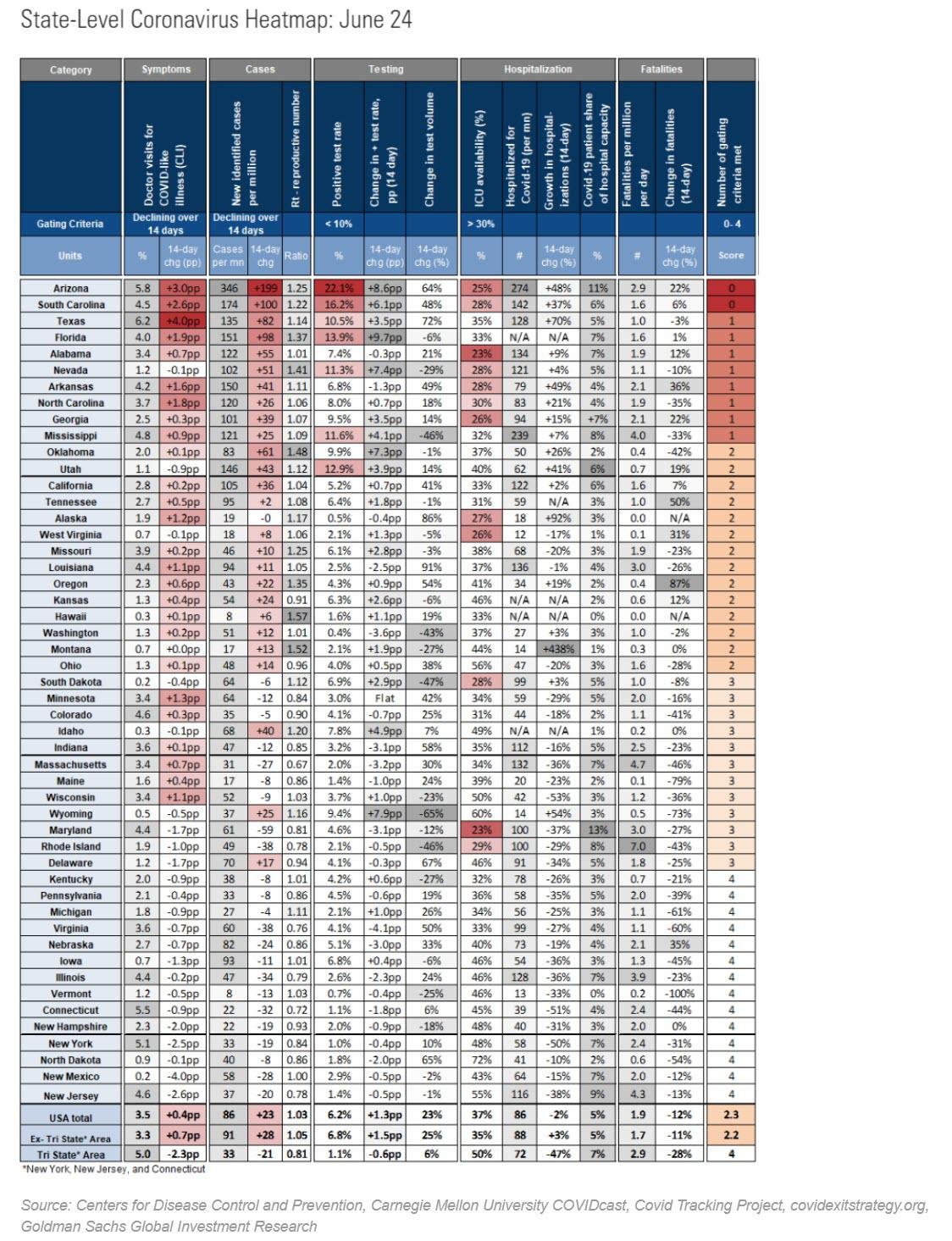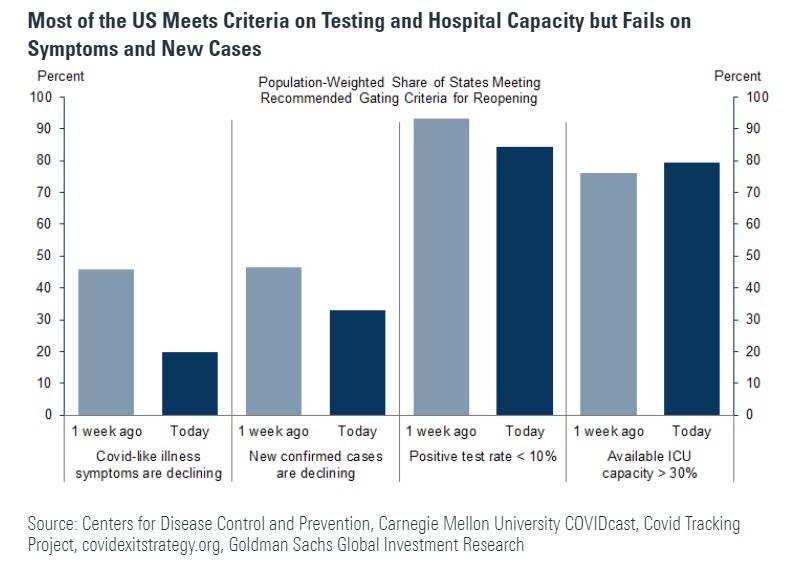Latest State-Level Coronavirus Tracker Shows Alarming Trend Reversal
Tyler Durden
Wed, 06/24/2020 – 11:06
Whether one believes the official virus data or is willing to dismiss it as a “plandemic”, is irrelevant for two reasons: i) markets still respond to every incremental headline, fully aware that it will shape fiscal and monetary policy especially with various Fed speakers warning yesterday that a second wave would lead to even more Fed intervention, and ii) the global coronavirus pandemic stopped being about epidemiology long ago and has since become a political weapon to be used at will by those with a certain agenda. It’s also why various states will be eager to use whatever data is published to pursue their political intentions, which according to many involve a new round of shutdowns some time in the late summer and in any case, ahead of the elections to encourage another economic meltdown and further crippling Trump’s re-election changes despite the administration’s solemn vows that a “second wave” shut down is not coming.
So what does the data show?
According to the latest Goldman state-level coronavirus tracker, the prevalence of coronavirus symptoms is rising, with the share of patients seeking care with symptoms of Covid-like illness at 3.5%, up 0.4% from 2 weeks ago. Daily confirmed new cases have risen steadily over the past several days to 86 per million, ending a 2-month decline. A big part of this is due to increased testing: indeed, the volume of daily coronavirus tests has risen 23% over the last two weeks, while the positive test rate has risen by 1.3pp to 6.2%. On the flipside, fatalities have declined over the last two weeks (-12% to 1.9 per million), although fatalities lag new cases by multiple weeks.
As a reminder, the federal government recommends states meet four criteria to proceed with reopening:
- symptoms should be declining,
- new cases should be declining,
- the positive test rate should be below 10%,
- at least 30% of ICU capacity should be available.
Currently Arizona and South Carolina—accounting for 4% of the US population—meet none of the four criteria; 8 states including Texas and Florida meet only 1 criterion; 14 meet 2; 12 meet 3; and only 14 states meet all 4 criteria.
As Goldman notes next, while states make their own decisions about reopening, a decline in hospital capacity below 20% could pressure states to consider slowing or reversing reopening. In this context, according to the latest CDC data, Alabama and Maryland currently have 23% of ICU beds available (with Covid patients accounting for 7% and 13% of occupancy respectively), and Arizona has 25% available (with Covid patients accounting for 11%).
Looking at the average US state, Goldman concludes that it currently meets 2 of the 4 federal gating criteria, with the most notable recent development being that the prevalence of Covid-like illness symptoms is declining in states representing 20% of the population, compared to close to 50% a week ago. New cases are declining in states representing only 30% of the population, also worse than last week. More encouragingly, the vast majority of states have a positive coronavirus test rate below 10%, and states covering 80% of the population have available ICU capacity above 30%
The key questions: is the above trend reversal sufficient to gut the recovery narrative and force states to resume hated shutdowns in the coming weeks? And if so, how will the Trump administration react and will the population even follow any new lockdown measures?

